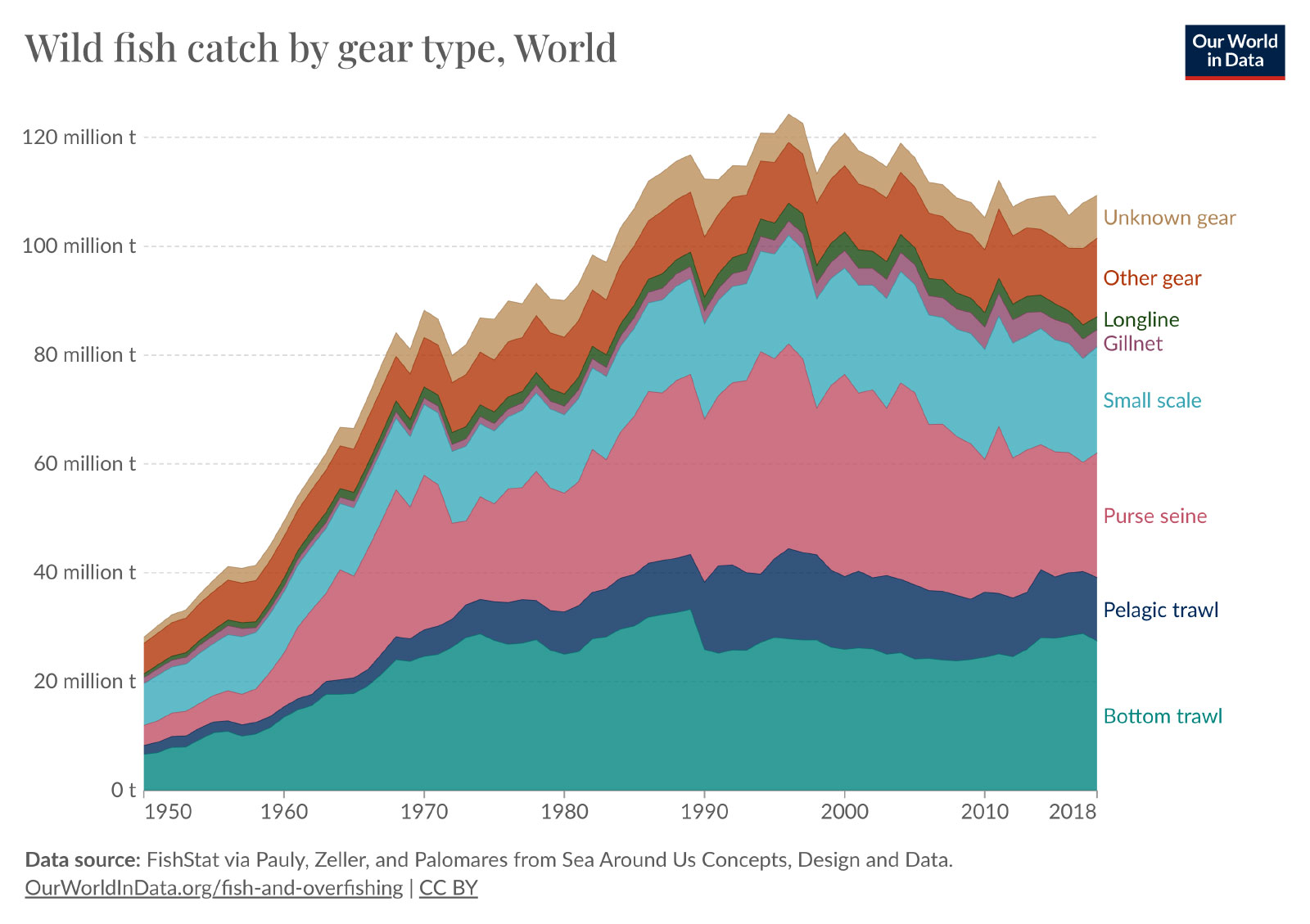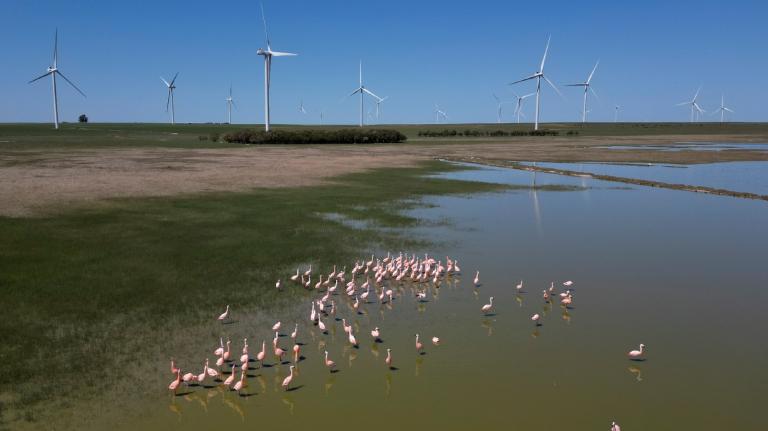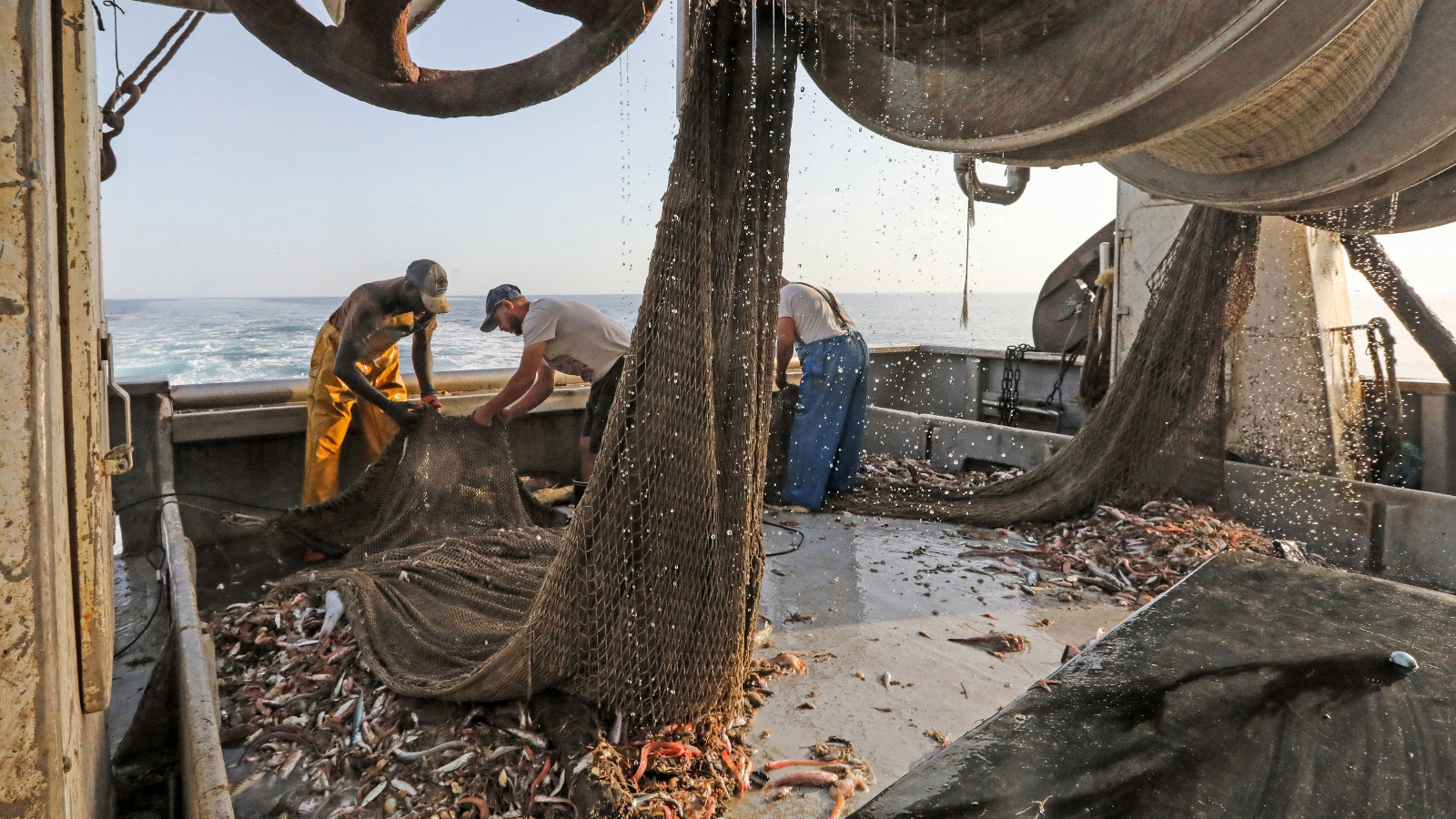More than a quarter of the wild seafood that the world eats comes from the seafloor. Shrimp, skate, sole, cod and other creatures — mostly flat ones — that roam the bottom of the ocean get scooped up in huge nets. These nets, called bottom trawls, wrangle millions of tons of fish worth billions of dollars each year. But they also damage coral, sponges, starfish, worms, and other sand-dwellers as the nets scrape against the ocean bed. Environmentalists sometimes liken the practice to strip-mining or clear-cutting forests.
According to a new study in the journal Frontiers in Marine Science, bottom trawling may be even worse than many people had thought. Dragging nets through the sand — which occurs over some 5 million square kilometers, a little over 1 percent of the ocean floor — isn’t just a threat to marine life. The study found that stirring up carbon-rich sediment on the seafloor releases some 370 million metric tons of planet-warming carbon dioxide every year, roughly the same as running 100 coal-fired power plants.
“I was pretty surprised,” said Trisha Atwood, a watershed scientist at Utah State University and the paper’s lead author. The findings, Atwood added, suggest that restricting bottom trawling could have “almost instantaneous benefits” for the climate.

The paper follows a study by some of the same scientists published in the journal Nature in 2021 – one that drew a lot of media attention as well as criticism from other researchers who thought its results were way off. In 2021, Atwood’s team found that bottom trawling unlocks more carbon from the seafloor than all of the world’s airplanes emit each year. But they couldn’t say how much of that carbon ended up in the atmosphere heating the earth and how much of it stayed in the water.
So that’s what they set out to do in the latest study. The team used fishing vessel data to map regions where trawlers have disturbed the seabed — like the North Sea off the coast of Europe — and applied ocean circulation models to estimate how much carbon dioxide flows from the sea into the air. They found that more than half of the carbon set loose by trawling makes its way into the atmosphere — and does so relatively quickly, within less than a decade.
“The most important finding here is that these emissions are not negligible,” said Juan Mayorgas, a marine data scientist at the National Geographic Society and co-author of the paper. “They are not small. They cannot be ignored.”
The world’s oceans are sponge-like in their ability to absorb carbon, soaking up a quarter of all the carbon dioxide that humans spew into the air. In fact, a lot more carbon is stored in the sea than in all the soil and plants on Earth. But until recently, little attention had been given to how much the oceans emit. “We know the oceans aren’t a closed system,” Mayorgas said. “At the same time the ocean is absorbing CO2, it’s emitting it.”
Most climate goals and policies don’t take emissions from sea-based activities like trawling into account. Atwood and Mayorgas said their study could help change that. “Now,” Mayorgas said, “countries can put all the information on the table and say, ‘Here’s how many jobs trawling produces, here’s how much food it produces, here’s how much carbon it’s emitting.'”
But there’s one big caveat: Not everyone agrees with their research. The 2021 paper — which provided data for the new study — has drawn considerable backlash from scientists who called the results “wildly overestimated.”
“I’m very skeptical about their estimates,” said Jan Geert Hiddink, a marine biologist at Bangor University in the Netherlands, in an email. The team’s emissions estimates are off by “several orders of magnitudes,” he said, and “are likely to lead to misdirected management actions.”
Hiddink, who co-authored a comment in Nature criticizing the 2021 paper, argues that carbon stored in the seabed is a lot less likely to be converted into carbon dioxide than Atwood’s team assumes in their models. He said that trawling in some locations — like shallow coastal areas that have muddy sediment and hold more carbon than deeper, sandier areas — is likely to spew some carbon dioxide into the water and atmosphere, but that more detailed research is needed to understand exactly how much gets unleashed. Hiddink suggested that some of the carbon dioxide that Atwood’s team claims to be released by rustling up the ocean floor is actually emitted naturally by microbes that break down decaying fish skeletons and other organic matter.
“There’s no way the kinds of numbers they’re talking about are anywhere realistic,” said Ray Hilborn, a fisheries scientist at the University of Washington. (Hilborn has been criticized for getting financial support from the fishing industry for his research. In response, Hilborn said he’s been open about funding sources and pointed out that he has also received support from environmental groups like The Nature Conservancy and Environmental Defense Fund.)
Atwood said Hiddink’s critique is “entirely theoretical” and doesn’t align with empirical studies as closely as her team’s models. Enric Sala, a researcher with the National Geographic Society and lead author of the 2021 paper, also pushed back against Hiddink’s points, saying in a prepared statement that they “lack quantitative support.”
Still, Atwood and her colleagues acknowledge that it’s not entirely clear how easily the sediment churned up by trawling releases carbon dioxide. Studies on that issue are “extremely limited,” the authors wrote. She said the latest paper is valuable for figuring out the proportion of carbon dioxide that winds up in the air after trawlers unleash it into the water.
“All of us agree,” Atwood said, “that this is an area that we need more research in.”




